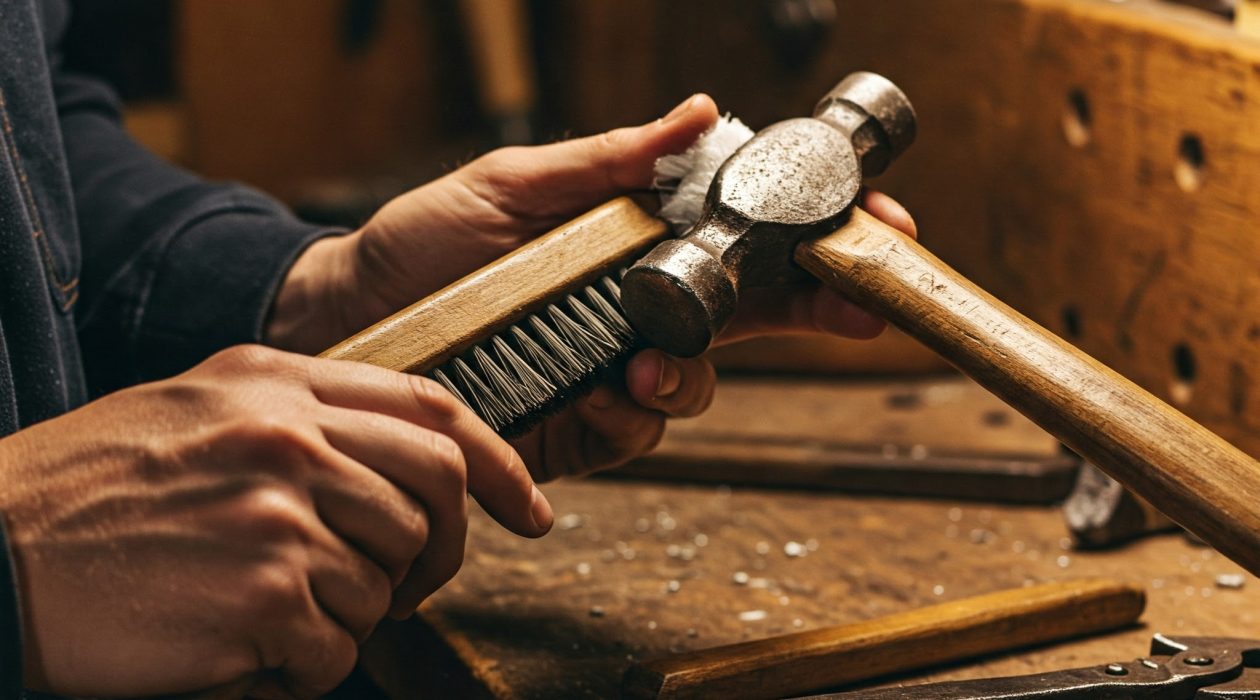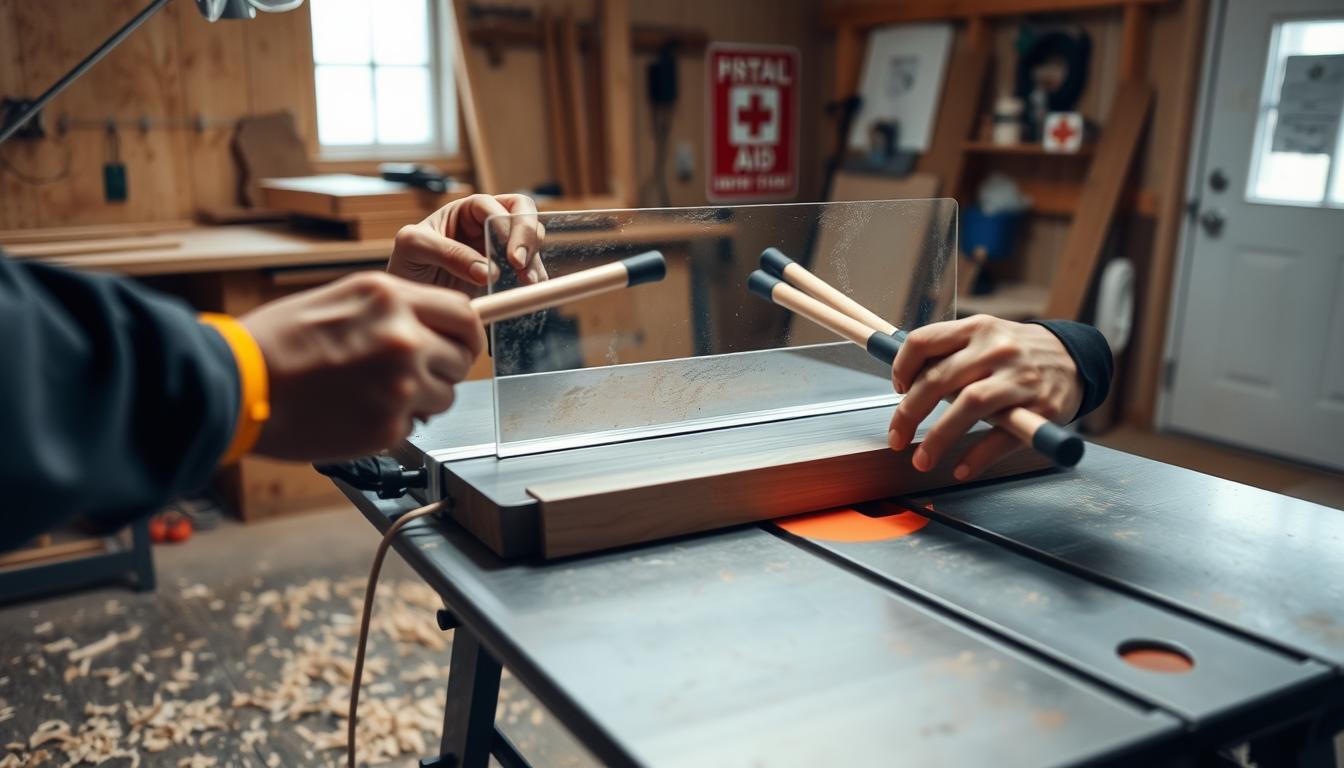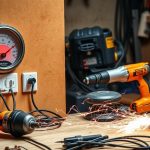Restoring hand tools is a fantastic way to revive your old or rusty tools, making them functional and reliable again. A tool restoration guide teaches you the techniques and materials needed for this task. Not only does it save money, but it also preserves the quality and uniqueness of vintage tools.
A tool restoration guide will guide you through the process of restoring old or rusty hand tools. By following it, you can bring your tools back to their former glory. This approach is both cost-effective and environmentally friendly. With the right techniques and materials, you can restore your tools and make them functional once more.
Restoring hand tools requires some knowledge and skills, but a tool restoration guide can help you learn. It provides the necessary information to restore your old or rusty hand tools. This process is rewarding, helping you save money and reduce waste.
Key Takeaways
- Restoring hand tools is a cost-effective way to maintain your tools
- A tool restoration guide can help you learn the techniques and materials needed to restore your tools
- Restoring hand tools preserves the quality and uniqueness of vintage tools
- Restoring hand tools is an environmentally friendly way to maintain your tools
- With the right techniques and materials, you can restore your old or rusty hand tools and make them functional again
- Restoring hand tools requires some knowledge and skills, but it is a rewarding process
Why Tool Restoration Matters: Benefits and Value
Restoring old or rusty hand tools is more than just fixing them. It has a significant environmental and financial impact. By following a tool restoration guide, we can cut down on waste and the need for new, resource-intensive tools. This method of restoring hand tools also helps preserve the quality and craftsmanship of vintage tools.
The benefits of tool restoration are numerous, touching on several key areas:
- Environmental impact: reducing waste and the demand for new tools
- Cost savings: restoring tools can be more cost-effective than buying new ones
- Quality comparison: vintage tools are often made to last and can outperform modern tools
When we consider the value of tool restoration, we must think about its long-term effects. By choosing to restore and reuse, we contribute to a more sustainable future.
In the next section, we will explore the essential safety precautions and materials needed for tool restoration. This will provide a comprehensive guide for those ready to start their restoration journey.
Essential Safety Precautions and Required Materials
Restoring old or rusty hand tools requires prioritizing safety above all else. Before beginning, it’s vital to take steps to protect yourself from potential dangers. Wear gloves, safety glasses, and a mask to shield against sharp edges, chemicals, and dust. It’s also crucial to work in a well-ventilated area to avoid inhaling harmful fumes.
To ensure a smooth restoration process, gather all necessary materials. Key items include cleaning solutions, sandpaper, and rust removal products for tools. These tools will aid in removing rust, grime, and other substances that impair tool performance. The list of essential materials includes:
- Protective gear (gloves, safety glasses, mask)
- Cleaning solutions
- Sandpaper
- Rust removal products for tools
- Wire brush
- Oil and lubricants
By adhering to safety measures and collecting all required materials, you’re set to restore your tools effectively. Always follow the manufacturer’s guidelines when using rust removal products for tools. This ensures your safety and prevents potential hazards.
Assessing Your Old Tools: Identification and Evaluation
Refurbishing old tools requires a careful assessment of each item. You need to check for damage and decide if it can be restored. This involves identifying common issues like rust, wear, and breakage. It’s crucial to evaluate if the tool can be brought back to its original state. A thorough evaluation ensures the tool is worth the effort of restoration.
Some common types of damage to look out for include:
- Rust and corrosion
- Wear and tear on moving parts
- Breakage or cracks in the tool’s material
Understanding a tool’s restoration potential is key. It helps decide if investing time and resources is worthwhile. By assessing the damage and the tool’s condition, you can make an informed choice about restoration.
Knowing a tool’s history and original purpose is also important. Researching its origins and intended use offers valuable insights. This knowledge helps you understand the materials and techniques used, guiding the best approach for restoration.
The Complete Tool Restoration Process
Restoring old or rusty hand tools demands a detailed approach for professional results. A comprehensive tool restoration guide is crucial for navigating this process. The journey begins with initial cleaning to remove dirt and grime. This is followed by rust removal for tools to tackle corrosion.
The restoration process involves several critical steps:
- Initial cleaning using a wire brush or sandpaper to remove loose debris
- Rust removal techniques, such as using chemical solutions or abrasive materials
- Surface treatment and repair to restore the tool’s original condition
A tool restoration guide offers the essential knowledge to execute each step effectively. When tackling rust removal for tools, selecting the appropriate method is vital to prevent tool damage. Adhering to a detailed guide ensures your tools are restored to their prime condition. This makes them safe and functional for DIY projects.
Always prioritize safety and employ the correct materials for optimal outcomes. With dedication and practice, you can master the art of restoring old or rusty hand tools. They will then become a valuable asset in your DIY arsenal.
Advanced Restoration Techniques for Different Tool Types
Restoring hand tools and refurbishing old tools demand specific techniques for each type. For example, tools with wooden handles might need refinishing or replacement. On the other hand, metal parts could require advanced rust removal or welding.
When restoring hand tools, it’s crucial to assess the material and damage level. Some tools might only need cleaning and lubrication, while others require more complex repairs. Refurbishing old tools is a cost-effective and eco-friendly way to prolong their life.
Here are some advanced techniques for different tool types:
- Wooden handles: refinishing or replacing
- Metal parts: advanced rust removal methods or welding
- Tools with moving parts: lubrication and adjustment
By employing these techniques, you can restore your tools to their peak performance. Always prioritize safety and use the correct materials for the task.
With the right techniques and materials, you can successfully restore your tools. This way, you’ll enjoy the benefits of restoring hand tools and refurbishing old tools.
| Tool Type | Restoration Technique |
|---|---|
| Wooden handles | Refinishing or replacing |
| Metal parts | Advanced rust removal methods or welding |
| Tools with moving parts | Lubrication and adjustment |
Restoring Wooden Components and Handles
Restoring hand tools involves more than just metal parts. Wooden components and handles are key to their functionality and beauty. A well-cared-for handle can significantly enhance a tool’s performance and look. Thus, assessing and repairing wooden parts is vital in a tool restoration guide for restoring hand tools to their original state.
First, evaluate the wooden parts’ condition. Look for cracks, splinters, or rot. Depending on the damage, you might need to repair or replace the wood. For small issues, wood glue and clamps can fix it. But for severe damage, a new handle might be necessary.
Wood Assessment and Repair
Assessing the wood accurately is crucial. Consider the wood type, its condition, and the damage extent. A detailed tool restoration guide can teach you how to assess and repair wooden parts. This ensures your restoring hand tools are both functional and attractive.
Finishing and Sealing Methods
After repairing or replacing the wood, applying a finish and sealant is essential. Use wood stain, varnish, or oil to highlight the wood’s natural beauty. Proper techniques and materials ensure your restoring hand tools are not only useful but also visually appealing. This makes the tool restoration guide an invaluable resource.
| Wood Type | Finish | Sealant |
|---|---|---|
| Oak | Wood stain | Polyurethane |
| Pine | Varnish | Wax |
| Maple | Oil | Lacquer |
Metal Treatment and Rust Prevention
When refurbishing old tools, metal treatment and rust prevention are key. Removing rust is vital to prevent further damage and keep tools in top shape. Regularly checking tools for corrosion signs is crucial to catch issues early.
To stop rust, applying rust-inhibiting coatings and storing tools in dry places is essential. Silicone-based sprays or wax-based coatings can protect metal surfaces. Also, cleaning and drying tools after each use helps prevent moisture buildup, which leads to rust and corrosion.
Effective methods for metal treatment and rust prevention include:
- Applying a rust-inhibiting coating to metal surfaces
- Storing tools in a dry, well-ventilated area
- Regularly inspecting tools for signs of corrosion
- Using a dehumidifier to maintain a dry environment
By following these steps and using the right techniques for rust removal for tools, you can extend your refurbished tools’ lifespan. Regular maintenance and care can also prevent costly repairs or replacements later on.
Metal treatment and rust prevention are vital in the tool restoration process. Proper care and maintenance ensure your tools stay in good condition, serving you well for years.
Testing and Quality Assurance After Restoration
After finishing the tool restoration, it’s vital to test and check the quality of the tools. This step is key to making sure the tools work well, are safe, and meet expectations. A detailed tool restoration guide should outline testing and quality assurance steps for the best outcomes.
When restoring hand tools, thorough tests are crucial to spot any issues. These include functionality tests, safety checks, and performance validation. By adhering to a structured tool restoration guide, you can ensure your tools meet the necessary standards.
Functionality Tests
Functionality tests confirm the tool works as it should and is safe to use. This is essential to prevent accidents.
Safety Checks
Safety checks aim to find any hazards with the tool. They look for sharp edges, loose parts, or other safety risks.
Performance Validation
Performance validation compares the tool’s current state with its original specs. It ensures the tool meets performance standards and is fit for its purpose.
By following these testing and quality assurance steps, you can ensure your restored tools are of high quality. They will provide reliable service. Whether for personal use or resale, a detailed tool restoration guide is crucial for top results.
Maintaining Your Restored Tools for Generations
After restoring your vintage tools, the next step is to keep them in top shape for years. Regular cleaning, proper storage, and inspections are crucial. These actions help maintain the quality and function of your refurbished tools. A simple maintenance routine allows DIY enthusiasts to enjoy their restored tools for generations.
Storing your tools in a dry, climate-controlled area prevents rust and damage. Use a light oil to protect metal surfaces from oxidation. Store wooden handles to avoid warping or cracking. Regularly check for wear and make necessary repairs to keep your tools in excellent condition.
Proper care ensures your restored vintage tools will last for years, enhancing your DIY projects. By preserving these tools, you save money and honor the craftsmanship of the past. This approach is also eco-friendly, making it a win-win for the environmentally conscious hobbyist.



